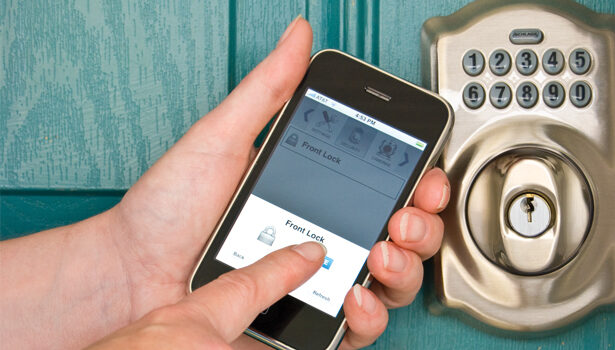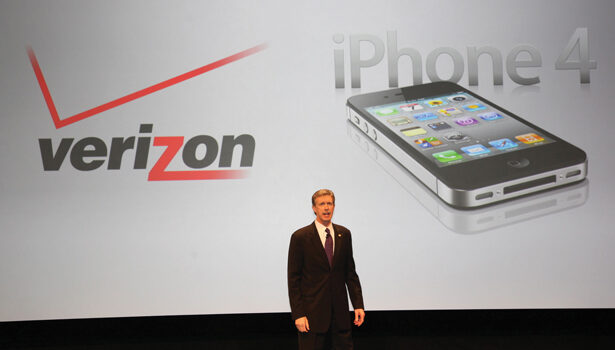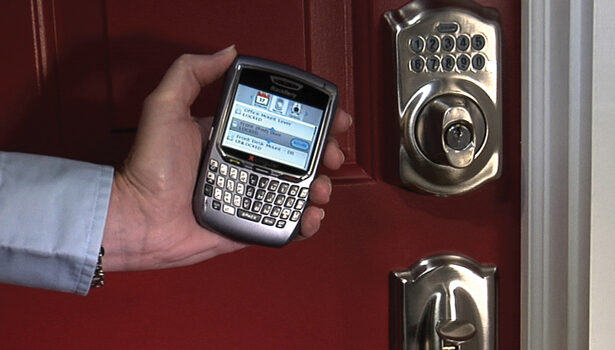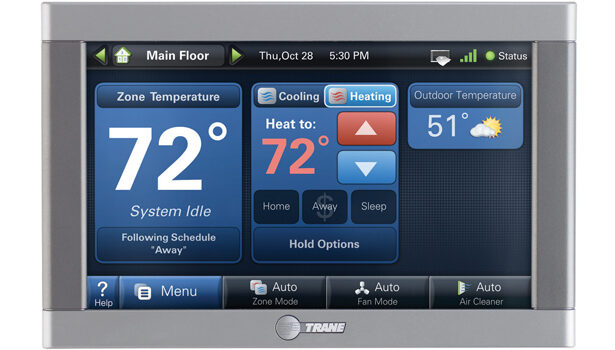The broadcaster of 30 Rock and Days of Our Lives is now offering home security. Just since last October, Xfinity from Comcast, which also owns NBC Universal, rolled out home security and monitoring; ADT, the world’s biggest home security firm, introduced a multi-level lifestyle monitoring and control service; Verizon, one of the largest U.S. communications companies, with a recent iPhone deal and a cloud computing acquisition in hand, has its own home monitoring experiment in motion; APX Alarm Security Solutions Inc., Provo, Utah, the fifth-largest alarm monitoring company on the SDM 100, rebranded as Vivint™ and launched new products turning its focus from alarm monitoring to a focus on whole home automation and monitoring (see page 149 for more on APX’s rebrand as Vivint™). And that’s not an all-inclusive list.
It’s easy to see what’s going on. Broadband providers see home monitoring, which may or may not include security, as a valuable addition to their bundle of television, Internet, wired and wireless services. Leading alarm monitoring companies are seeing the whole home (automation and monitoring), as a valuable extension of their traditional alarm and fire monitoring. To varying degrees, homeowners see value in monitoring of energy use, video cameras inside and around the home, and accessing and controlling their system from a smartphone or laptop from anywhere through an interactive Web connection.
That’s easy to see. What’s more challenging, however, is viewing the potential impact on the more traditional electronic systems contractor (ESC) and, more importantly, what they should do in response.
Are broadband and wireless communications providers a threat to business or an enabler for today’s home-focused electronic systems contractors and their fellow security dealers and installers?
No doubt “increased competition as adjacent industries (security, electrical, content providers, utilities, etc.) enter the market will challenge the traditional ESC value proposition,” points out Randy Stearns, owner of Engineered Environments, Alameda, Calif. and the chairman of the Custom Electronic Design & Installation Association (CEDIA), Indianapolis.
One reason? “Large marketing dollars available to the national players such as utilities and service providers paint an oversimplified picture,” Stearns says. “We have all seen the iPhone commercial demonstrating the lighting control application, and consumers now believe they simply need to purchase a smartphone to control their lights. What is not mentioned in the commercial is that you need hardware behind the app and, in many cases, someone to install and program that hardware,” he explains. While Apple’s ads are raising awareness, the execution of the promised home control and home “solutions” lies in the hands of the ESCs.
The question is how many solutions customers will want, how many customers will want solutions and how many solutions a company will need to provide. Leading alarm monitoring companies ADT (ADT Pulse), Protection One (eSecure), Alarm.com (empower) and some others are advancing the concept of lifestyle services coupled with security.
ADT spokesperson Bob Tucker says, “We are very pleased with the results we’ve seen since ADT Pulse launched nationwide in October and how customers are reacting by customizing applications to fit their own needs.” He points out that his firm is “seeing strong interest from both new customers who are hearing about this exciting new solution, as well as existing customers looking for extra capabilities with their current systems.”
Protection One, the second-largest alarm monitoring firm on the SDM 100, also provides significant lifestyle services through its eSecure, which Doug Paul, the firm’s vice president of operations and corporate services, characterizes as providing valuable “information and controls.” In one way to differentiate itself, eSecure can include asset protection sensors, so that the homeowner can be notified immediately if a medicine cabinet, gun safe or another sensitive asset is moved or opened. Through eSecure, “there is [customer] appeal to know what is going on in the home,” adds Paul. eSecure is a branded version of Honeywell’s Total Connect interactive services as provided by Protection One.
The recent drive into the home by broadband and top alarm monitoring companies exposes a natural synergy between alarm monitoring and lifestyle management. Stearns comments, “As technology proliferates further into the home, we find more ‘connected’ devices on the HAN (home area network), all of which will be monitored in some way. As such, the ESC has a lot to learn from the business practices and model of the alarm contractor.”
He continues, “I don’t believe one specific channel (such as security) will monopolize the monitoring world, nor will the large utility and broadband service providers. Successful monitoring programs are only valuable if coupled with valued ‘service.’ I imagine we will see bundled monitoring services [security, network, energy, home health, etc.] in the long term rather than a la carte.”
Whether professionally installed or do-it-yourself (DIY), it is no surprise that the Internet will play an increasingly important role in home systems. And product manufacturers agree that IP-enabled has a growing attraction for the home systems customers. “It’s a time to push the envelope,” says Mark Ingram, president of Visonic, Bloomfield, Conn. Among his firm’s offering is wireless networking that uses two-way, low-power frequency hopping spread spectrum, branded as PowerG™. “In today’s evolving markets, the communication infrastructure at customers’ residences can vary greatly,” says Ingram. “At any individual site, landline, GSM, GPRS and IP communication can all exist, alone or in any combination.”
Mike DeMille of DSC/Tyco Security Products, a Tyco International company, concurs in the commitment of some product manufacturers to the evolution of home security to lifestyle monitoring and from landline to diverse communications methods. “We have been dealing with cellular and Ethernet” for many years and with technology that allows users to do remote monitoring. He suggests that, beyond today’s push for home energy management and security video, an emerging and potentially huge lifestyle application will center on home healthcare covering medical alerts, delivery of medicine, remote checking of vital signs, monitoring of potentially wandering patients and video look-ins.
Which gets back to the attraction to home monitoring by the firms with the biggest communication pipelines into and from the home and a large customer base.
“Is it a threat? For those who provide the same type and level of services, yes. However, our industry is so diverse because the consumer base is so diverse, and there is (and more importantly will be) plenty of business for all relating to sales and installation of finished goods,” Stearns says.
Overall, the broadband and wireless technology tide will raise all boats. “The influence of these large national providers [such as Verizon and Xfinity] on consumer awareness is enormous, and that is a good thing for the industry overall,” observes Stearns. Increased awareness opens a highway of opportunity and previously untapped customers for ESCs to utilize.
Says ADT’s Tucker, “Connectivity and interactivity are driving the way people live and ultimately manage their homes; so it’s a natural next step for us to leverage our market-leading reputation and ‘peace of mind’ protection to offer an interactive service that makes it easy and convenient for consumers to connect to their homes and businesses.”
So says the biggest alarm company in the world. For others, there may be bumps along the way. For electric utilities, broadband and wireless providers to enlarge their bundle into home monitoring, they will need to have some source or level of trained workers in addition to those they already have. So for some ESCs, the entry of broadband providers in home monitoring will lead to partnerships on the installation side, augmenting higher margin luxury home entertainment and automation projects with simpler, quicker mass market projects for the broadbands.
For example, when it comes to installation beyond DIY of Verizon’s connected home offerings, “we intend to use local installation professionals,” says Verizon spokesperson Alberto Canal. In Xfinity’s Houston pilot, Comcast will first use internal expertise thanks to its acquisition of the local Time Warner operation. But it seems likely that it will also have to go to others for installation, if Xfinity intends to roll out its offering more fully and widely.
A skilled workforce is a challenge for ESC firms, too.
Says Stearns, “The biggest challenge our industry faces is building a trained workforce to supply the ensuing demand for technology. The golden ring, of course, is the recurring revenue stream from the millions of consumers who will ultimately subscribe to some type of service. Even though the security industry has been quite successful in the recurring revenue model, the point of entry (in technology purchases) for consumers has historically been entertainment. So it is quite possible that the content providers will have the upper hand regarding bundled services.”
Confident in his profession, Stearns comments, “Either way, the electronic systems contractor will prevail; regardless of how easy or how inexpensive the technology becomes, people will ask someone else to install it. After all, you could install your own faucet, cut your own lawn, clean your own pool.”
Which may, sooner or later, cool down a DIY approach such as Verizon’s as its lifestyle monitoring and control moves to more sophisticated home HVAC and lighting management, whole house video streaming and the emerging attraction of security video cameras.
Customers will want more than a DIY kit can provide.
“For decades, customers have desired the ‘peace of mind’ protection provided by 24/7 monitoring,” Tucker says. “Now, they want all that, but ‘added value’ through additionally functionality. It’s protecting and connecting. It’s life safety and lifestyle. It’s a way for ADT to grow market share and engage the types of customers who may not have considered us in the past.”
For Stearns and many of his CEDIA colleagues, diversification is an important way to roll with the punch of big competitors. But what about the bundle battle coming from those utility, broadband and wireless providers?
The irony is that, as the bundle gets bigger, the approach may break down, especially for firms offering Internet, television, wireless and home monitoring service. The crumbling may come in the bill. According to Ablondi, adding even more services on the cable or wireless bill may lead to “sticker shock beyond the already high price of bundling television, voice over IP and wireless.”
And, when push comes to shove with higher and higher monthly costs of service, a homeowner may choose to unbundle or even drop some offerings. Depending on how a customer defines it, essential will out maneuver “cool” technology.
There is also a lot to say for the personalized and close relationship of ESCs to their clients when compared to the “they treat me like a number” perception customers have of their utility, cable and wireless providers. Service and loyalty have an increasing role to play in a new tech era. Stearns agrees.
He continues, “The manufacturing community and the dealers alike have capitalized on the advancements in mobile technologies and wireless devices simply because they increase the consumer awareness and their ability to interact with the technologies in and around their homes. Increasing the points of contact drives revenue. CEDIA represents some of the most advanced electronic systems professionals in the industry. These are the innovators that forged the way for the industry. It is called ‘custom’ for that reason. We embraced device connectivity before broadband or WiFi existed. Created networks prior to Ethernet, Z-Wave or Zigbee. And delivered one-touch control long before the ‘app’ world ever existed. Today our members are once again forging the way to real-world, practical solutions.”
“The ‘diversity’ [of technologies, products and services] is the real point,” Stearns says.
And those “solutions” are what the broadband, wireless and monitoring companies are betting customers want, which means the ESCs are right on track. SH
| Is the Smart Grid Part of the Bundle? |
|
There are “low ceiling” plateaus when it comes to alarm monitoring, whole home audio and video, home theater and security video; but most everyone has electricity service with monthly bills continuing to increase and then there’s the smart grid approaching as well. So, will home energy controls be the next sweet spot in lifestyle monitoring, even in the face of a slow economy and a poor housing market? A lot of companies think so. To underline the potential, for example, Vivint, formerly APX Alarm Security Solutions, recently acquired Meter Solutions, which specializes in the installation of automated metering infrastructure systems, a technology that automatically collects data from water, gas or electric meters and wirelessly transmits the information to a central database used for billing and analyzing. “We are excited to see the evolution of home automation and smart grid technologies as they begin to work hand-in-hand,” says Alex Dunn, chief operating officer of APX Alarm.
Beyond the gadgets and gizmos inherent in new-age home monitoring, fully featured home security systems play a natural, maybe essential, role since – through arming and disarming – the security system and other home monitoring elements such as energy management realize that people are home or not. For example, in another recent move, Control4, with IP-based home control systems, was recently chosen by AEP Ohio, a unit of American Electric Power, to pilot customer experiences with home energy management. Its home automation platform completes AEP Ohio’s AMI plan to deliver a home area network demand response solution that consumers can embrace. The overall project includes approximately 110,000 advanced electricity meters, new distribution grid technology, distributed energy sources, plug-in hybrid electric vehicles, smart appliances, and consumer systems and products to help customers manage electricity use and costs. Control4’s role combines in-home device feedback and programmable thermostat control. |
| Cable or Wireless: Whose Market Is It, Anyway |
|
Broadband and wireless service providers have leaps and bounds market share as compared to the penetration of security alarm monitored homes and homeowners with whole house audio/video, home theater, home automation, home energy management and smart lighting controls. And these big players both own the pipelines into and from homes and also can easily bundle home monitoring with television and Internet services.
U.S. Households: Penetration of Cable
Basic Video Customers 60.4 million Source: National Cable & Telecommunications Association |





